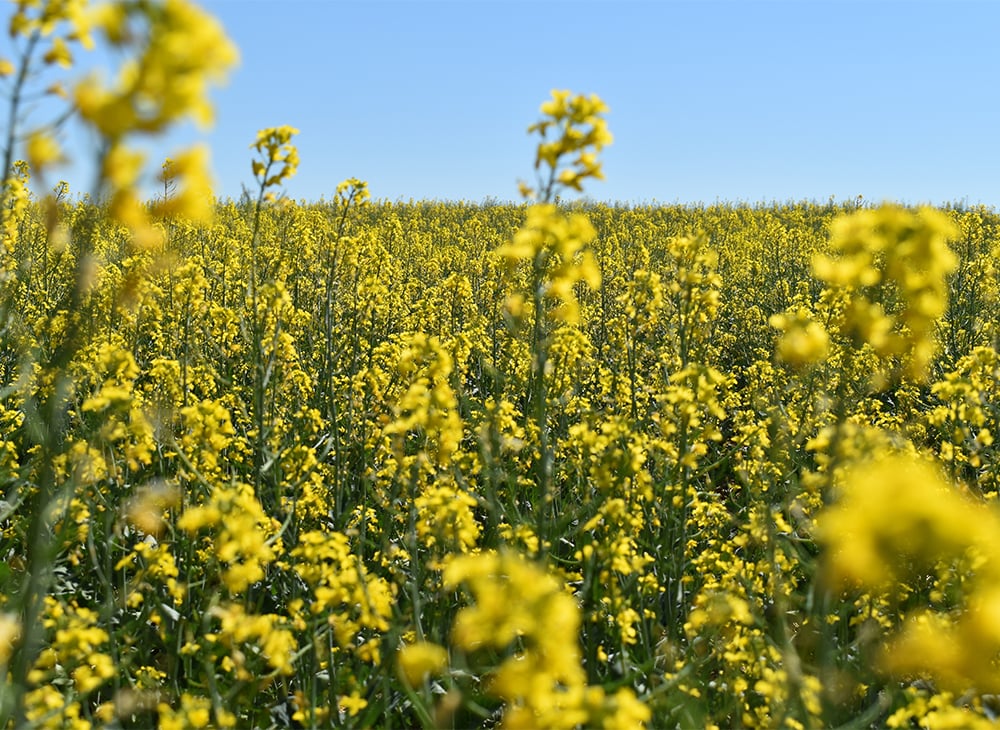CARBERRY, Man. — Forty to 50 percent of the time in Western Canada, a canola seed fails to become a plant.
There’s many possible reasons why a seed doesn’t emerge from the soil. Maybe it was too close to a neighbouring seed, or it was seeded into chilly soil in early May.
But there’s another possible explanation — phosphorus.
“I think the reason that our emergence averages 50 to 60 percent on the Prairies, for commercial growers, has a lot to do with seed-placed fertilizer,” said Autumn Barnes, a Canola Council of Canada agronomist in southern Alberta. “We need phos, but are we putting too much with the seed? In some cases, maybe.”
Read Also

Why feds imposed EV tariffs
Moe and Kinew have a fight on their hands when it comes to eliminating the EV tariff. Canada has to worry about pissing off the U.S. and Mexico and hundreds of thousands of auto workers.
Barnes, who spoke at Crops-a-Palooza, a field day held late July in Carberry, Man., added that phosphorus is just one factor that influences canola emergence.
This June, for example, hundreds of canola fields looked patchy and ugly because of dry soils and cool conditions across the Prairies.
However, phosphorus is an issue.
Some canola growers are applying too much of it at seeding.
“We have pushed and gotten away with high rates of seed-placed fertilizer…. They are putting 30 to 40 pounds of actual phos with the seed,” said Angela Brackenreed, a CCC agronomist in Manitoba, who also spoke at Crops-a-Palooza.
Canola needs phosphorus in the seed row to ensure early season growth and help the plant pop up in June.
However, the CCC and provincial experts say the maximum rate of seed-placed phosphate is 20 pounds per acre. Anything above 20 lb. could be toxic to the seed and could hinder emergence, especially in a dry year.
“When we get dry (conditions) … people are going ‘this is strange. Why does it seem like I don’t have a very good plant population?’ ” Brackenreed said, on a breezy, 28 C morning at the Crop Diversification Research Centre in Carberry.
“Manitoba’s maximum recommended rates, 20 to 25 lb. of actual P, I used to think that was really conservative. But in these dry years it is (appropriate).”
Excessive phosphorus could be impairing canola emergence, which in turn will reduce plant populations. CCC research shows the yield from canola stands with five to six plants per sq. foot, on average, is about five bushels per acre higher than canola stands that average two to three plants per sq. foot.
Agriculture Canada data from field surveys done across the Prairies, suggests the minority of growers are achieving five or more plants per sq. foot.
- In Alberta, in 2017, 60 percent of surveyed canola fields had less than four plants per sq. foot.
- In Manitoba, in 2016, about 45 percent of fields had less than four plants per sq. foot. and 65 percent had less than five plants per sq. foot.
As well, the survey showed that most fields have areas with low plant populations.
“Eighty-five percent of those fields (in Manitoba) had patches of less than four plants per sq. foot,” Barnes said. “Target (plant) density is really important, but that uniformity is important too.”
Again, too much phosphorus with the seed is not the only reason for poor emergence, inadequate plant density and non-uniform plant stands.
But the phosphorus rate is something that’s easy to control.
“I’d like to see growers turn off their phos for a couple of hundred feet,” Barnes said. “(Then) they can actually (do) counts and look at the difference (in) emergence, between their phos and no (phos).”
Not applying phosphorus isn’t an option because canola needs it early in the season and about 0.9 to one lb. of the nutrient for every bushel of yield. The question is when and how to get the phosphorus in the ground.
Increasing application rates for other crops in the rotation is an option. Another is fall application.
“Maybe you could look to fall banding phos and potash,” Brackenreed said.
“It’s stable. It’s going to be there. Then making sure you put a little bit in the seed row for that early season growth. That pop-up effect.”
















